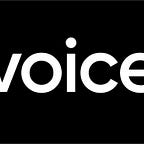What it means to be on public blockchains
When Voice first launched as an NFT marketplace in 2021, we ran on a private EOSIO chain. At the end of 2022, we became a fully public chain-based platform.
In that first year, being on a private chain was nearly the only way to enter Web3 in an ethical and user friendly way. Most importantly, it enabled us to minimize our environmental impact and build a carbon neutral ecosystem. Most public chains were running on systems that consumed massive amounts of energy — we’re talking the equivalent of entire countries. In a single year, Ethereum used to consume the same amount of energy as the entire country of Chile, which has a population of 19.5 million people.
The Voice private chain allowed us to eliminate barriers to entry in the NFT space by removing those up front costs that artists faced on other marketplaces and blockchains. Accessibility and inclusion remain really important to us, as we continue to provide opportunities for creators from underrepresented and marginalized communities to be included in this new digital space.
So why did Voice switch to public chains?
It’s really simple, actually. The NFT space evolved for the better and the art world started embracing digital art with new enthusiasm and curiosity, all in ways that aligned with our core values. Thanks to pressure from blockchain/NFT leaders, artists, brands, and climate activists all over the world, Ethereum switched from a proof-of-work model to a proof-of-stake model, becoming 99.95% more energy efficient in the process.
Additionally, a handful of Layer 2 blockchains emerged and gained popularity in recent years. These chains (e.g. Polygon) formed as scaling solutions for the Ethereum blockchain and offer low-cost transactions on carbon neutral networks.
Transitioning from a private chain to a public one allows us to be truly decentralized — which is currently one of the most important aspects of Web3 along with scalability and security. Understandably, many NFT collectors simply refuse to purchase digital artworks if they’re not on well known, secure, and transparent blockchains. Minting directly to public chains gives Voice artists access to a new group of Web3 native collectors.
As for gas fees, collectors will now pay the fees so we can keep the space accessible to artists from a wide pool of socio-economic backgrounds.
Advancements in blockchain technology and operations have allowed us to grow in Web3 with a continued focus on transparency, security, and decentralization while still remaining accessible, environmentally conscious, and artist-forward.
